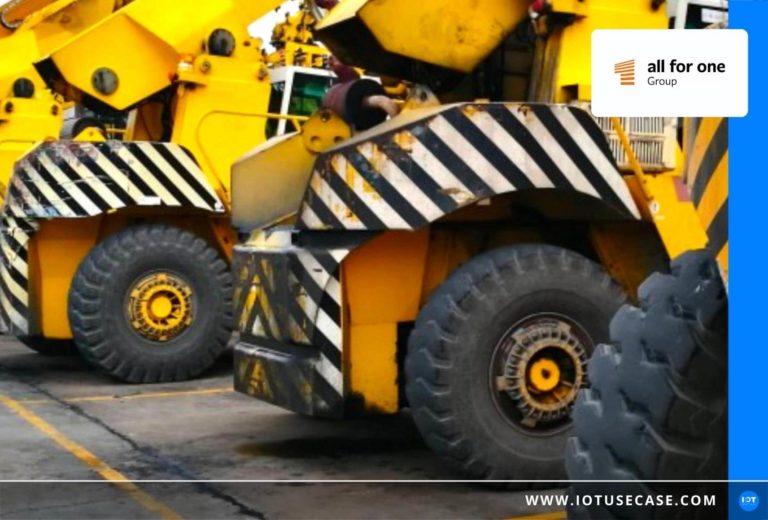The journey is the destination: Predictive maintenance – needs-based maintenance using a data-based forecast – is not a turnkey solution, but must be specifically adapted to the needs of the individual company. However, it is not only the final stage of development of a predictive maintenance solution that brings great added value; there is also a lot to be gained on the way there.
The challenge: Avoiding machine downtime
Machines need regular maintenance and the shorter the maintenance intervals, the more likely unplanned downtime will be avoided. At the same time, effort and personnel deployment are increasing. That’s why many companies are looking for alternatives. Digital technologies around the Industrial IoT (Internet of Things) offer a solution approach here: The intelligent monitoring of machine conditions to prevent unplanned downtime.
This concept is referred to as “predictive maintenance.” This is a system that uses data analysis to predict a machine or product failure with a certain probability. This requires the collection of data from as many machines of the same type as possible over a period of time. Once this is done, the data can be analyzed and examined for patterns and correlations: Are there parameter characteristics that can be associated with a subsequent failure? Based on this, forecasting models can be set up and threshold values defined that automatically trigger follow-up processes (such as requesting a service technician). After all, predictive maintenance only brings real added value if a probable failure is also linked to an efficient response. The information that a failure is imminent is of little use in itself for the time being.
Internal vs. External
Predictive maintenance can be implemented both for machines in the company’s own production and for systems in customer operations.
In the first case, collecting a sufficient amount of data tends to be more difficult. Often there are only a few machines of the same type, i.e. one has to collect data over a longer period of time to get a minimum quantity. On the other hand, data quality is more dependent on individual machines.
In the second case, data of the same type can in principle be collected more quickly (a manufacturer often sells many of the same machines), but there is the challenge of actually obtaining this data: They are at the customer’s site, which means connectivity must be available, as must the customer’s consent to transmit the data.
The objective is also somewhat different in each case: In the case of in-house production, the primary objective is to avoid (unplanned) downtime or to be informed in good time of a failure and to have sufficient technician resources and the appropriate spare parts ready. Predictive maintenance for machines in customer use additionally aims to be able to offer customers better service.
The set-up of a predictive maintenance scenario
In both scenarios, the first step requires the collection of machine and/or sensor data from a plant. This data – usually very large volumes (Big Data) – must be transferred via a gateway to a suitable cloud environment, where it is stored and processed. When it comes to machines in customer use, appropriate connectivity solutions may have to be found.
Then an initial analysis can begin: Is the appropriate data available and can conclusions be drawn from it about the causes of failures? Can patterns be identified – for example, that parameter characteristics such as a certain temperature value are related in time? Once such hypotheses are available, they can be transformed into models. These then need to be verified with a fresh data set. If a hypothesis is correct, it can be used for a failure prediction – such as: If a parameter reaches a certain threshold, there is a 98% probability that a failure will occur in the next 10 minutes.
However, pure failure prediction does not yet bring any great added value. Predictive maintenance unfolds its full potential when a follow-up process is triggered automatically and efficiently on the basis of the forecast – for example, the order for the maintenance technician or the automated ordering of required spare parts. Such processes usually run in an ERP system. A holistic predictive maintenance solution must therefore be integrated into such a system.
This makes it clear that the implementation of a predictive maintenance scenario in its final stage is sometimes a complex undertaking, combined with a corresponding implementation project, the scale of which many medium-sized companies in particular shy away from.
The journey is the destination
The fear of an investment that is difficult to calculate is mostly unfounded. This is because, normally, companies do not need to reach a final expansion stage in order to achieve added value. Some examples:
- The mere collection and visualization of real-time data can provide a great deal of insight and drastically reduce reaction times: In the company’s own production, machine statuses become transparent and can be displayed in a dashboard, for example. Thus, a single person can monitor a large number of machines and plants, regardless of where they are located. If a malfunction or other problem occurs, immediate countermeasures can be taken. If machines in use by customers send performance data back to the manufacturer, the latter receives valuable information about how its products are actually used. They can better align them with customer needs or help their customers use them in a more sustainable way.
- By processing and analyzing the data, correlations and patterns can be identified that are valuable for plant operations, customer service or even spare parts management. To optimize the latter, it is not normally necessary to have 99% accurate failure forecasts for individual machines. Aggregated predictions of spare parts requirements based on actual wear data are in most cases many times more accurate than conventional disposition suggestions.
In this way, concrete economic added value can be created in all intermediate stages towards a predictive maintenance solution, which is often a worthwhile goal in itself. Sometimes it may also turn out that the final expansion stage is no longer a sensible goal for a particular company at first, since a preliminary stage is quite sufficient for the moment, as it brings sufficient efficiency gains.
The only important thing is not to lose sight of the big picture. Even though the journey is the destination, you should make sure that you don’t hit any technological dead ends along the way.
A holistic approach and standardized components
As an implementation partner, the All for One Group has extensive experience in developing digitization solutions throughout the DACH region. The focus is always on the triad between technology, processes and people, the guarantor of sustainable success.
Another success factor is the absolute focus on the customer’s problem: With regard to IoT solutions such as Predictive Maintenance, this means: The goal is not the final expansion stage, but exactly what offers the customer the optimal cost/benefit ratio.
Every customer need is individual, but technologically the All for One Group takes the approach of meeting that need with as little individual project as possible. This works by building individual use cases with standardized and field-proven components – such as the All for One IIoT Connector or a standardized data analytics package. This now goes so far that individual solutions can be put together as if using a configurator.
By using the components, even predictive maintenance solutions lose much of their project character – they become more cost-effective, more stable and thus more suitable for medium-sized businesses.
As an SAP specialist, the All for One Group is also an expert in integrating IoT solutions into SAP systems – an important aspect, as only end-to-end processes enable maximum efficiency gains. All for One’s portfolio is completed by strong competencies in transformation management to provide the best possible support for the change processes often associated with IoT projects.
Conclusion
Predictive maintenance is not an off-the-shelf product and tends to be complex. But with a holistic approach and smart technological approaches, the concept is a tangible goal even for mid-sized companies – especially since economic added value is not only achieved in the final expansion stage.





